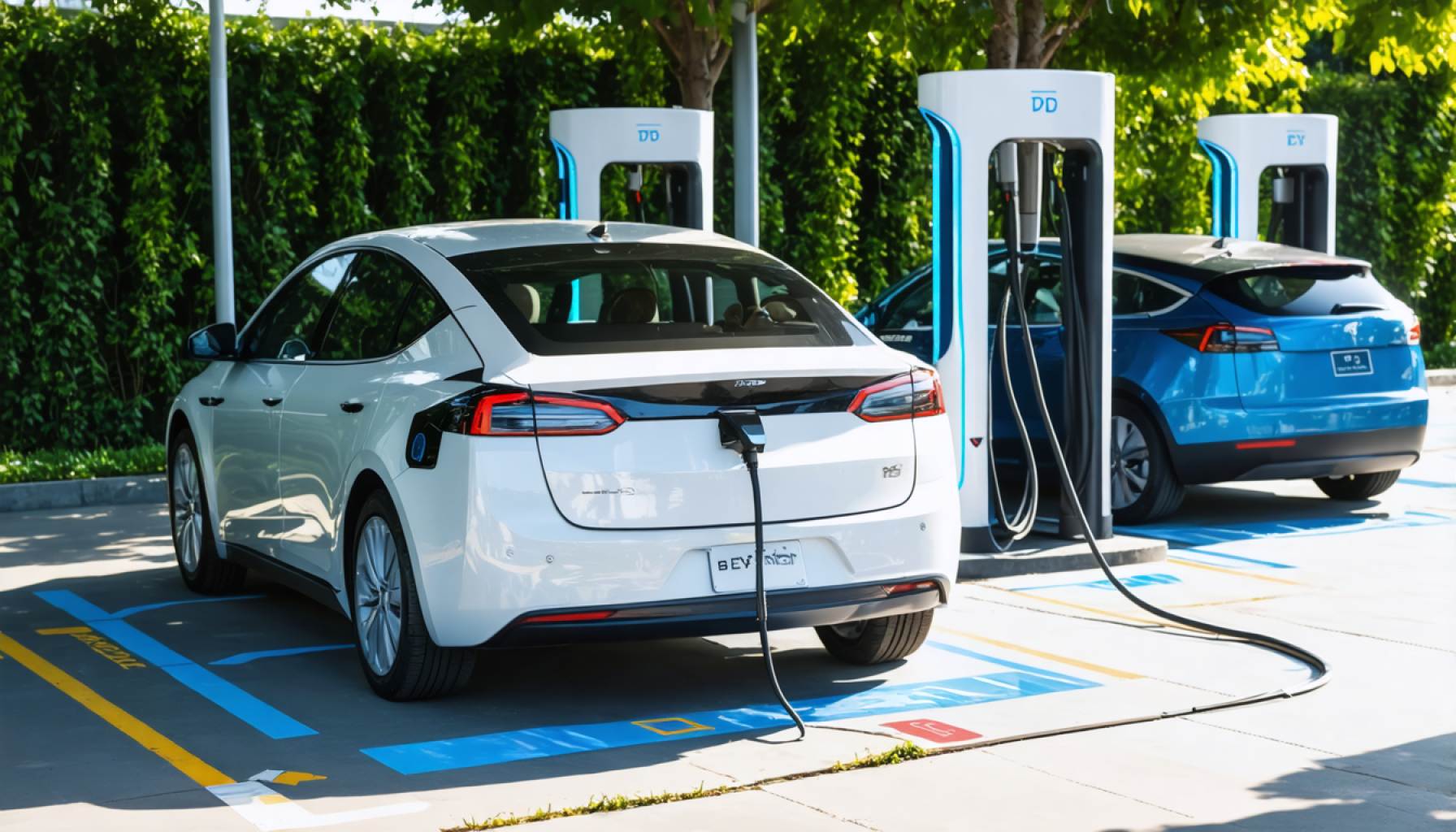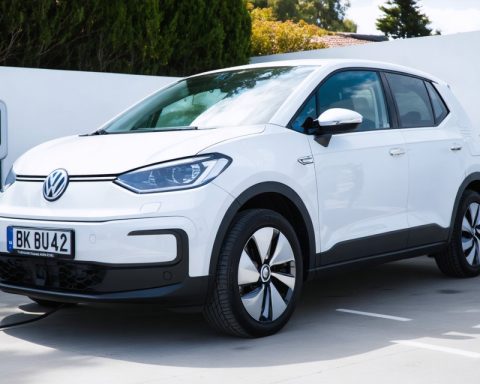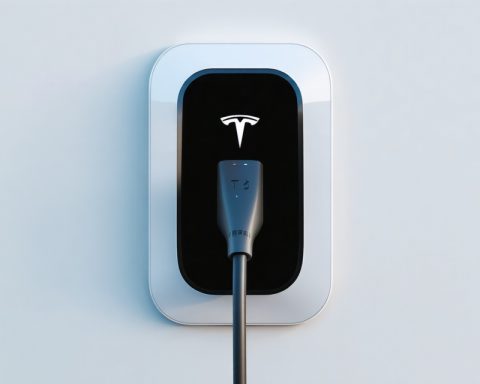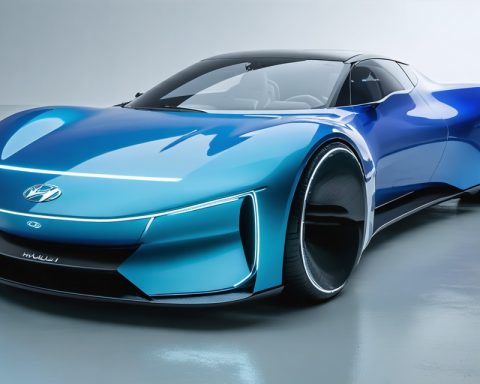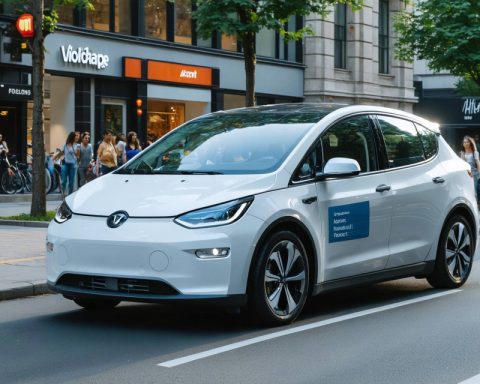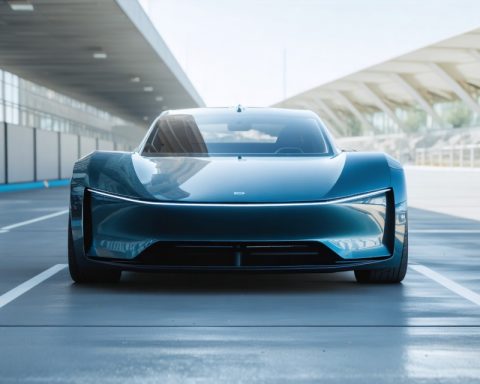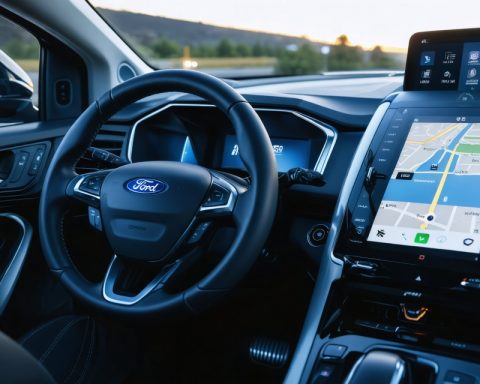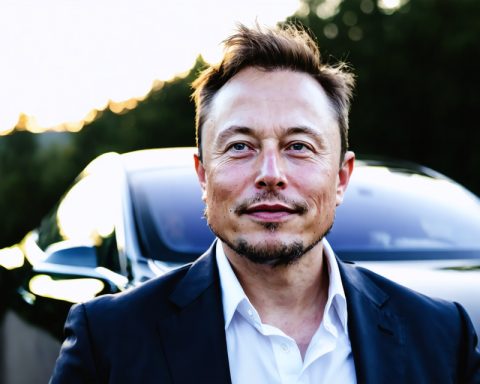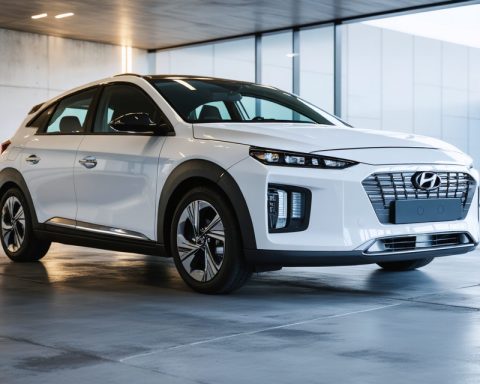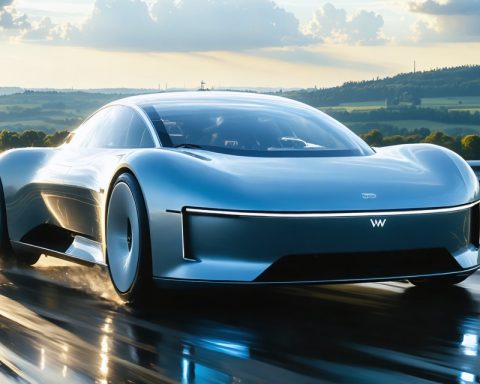- Tesla faces challenges in 2025 due to declining sales in the U.S. and Europe, Cybertruck issues, and increasing showroom vandalism.
- BYD in China introduces groundbreaking EV charging technology with “megawatt flash-chargers” capable of 250 miles recharge in five minutes.
- BYD’s chargers far exceed Tesla’s current capabilities, with a maximum output of 1,360 kW compared to Tesla’s 325 kW.
- BYD surpasses Tesla in electric vehicle production, with a significant increase in “new energy vehicles,” including plug-in hybrids and EVs.
- Trade barriers and tariffs prevent BYD’s innovations from entering the U.S. market, keeping American consumers from accessing these advancements.
- Innovation occurs globally, but geopolitical and market realities can limit technological progress in certain regions.
- Tesla must address these challenges to retain its leadership in the competitive and rapidly evolving EV market.
Tesla, an emblem of innovation on American roads, now faces turbulent waters as 2025 unfolds. A cascade of challenges shadows the once-unshakeable company: sagging sales in the U.S. and Europe, vexing Cybertruck incidents, and escalating vandalism plaguing showrooms nationwide. Yet, a surge from the East, more ominous and far-reaching, threatens its dominance even further.
In China’s bustling tech hub, BYD unveiled a quantum leap in electric vehicle (EV) charging technology—a leap so significant that it sends ripples across the global auto industry. BYD’s pioneering “megawatt flash-chargers” boast the ability to recharge up to 250 miles in a mere five minutes. This audacious stride dwarfs Tesla’s Supercharger capabilities, creating a tantalizing vision where EVs refuel with a gas tank’s swiftness.
This new development carries a sharp edge: BYD’s chargers, poised to debut in 4,000 locations across China, promise to redefine the EV experience. The spec sheet is staggering. A maximum output of 1,360 kW is testament to BYD’s technological prowess, far surpassing the power of Tesla’s latest V4 units, which tap out at 325 kW. The numbers echo louder than any corporate press release, hinting at a future where BYD’s rapid ascent could shift the tectonic plates of the global EV market.
The stakes stretch beyond mere statistics. Last year, BYD overtook Tesla in producing fully electric vehicles, buoyed by a 41% increase in its “new energy vehicles” production. The surge underscores a seismic shift as BYD charts new horizons with plug-in hybrids and EVs— a feat accompanied by whisperings of concern in Tesla’s boardrooms.
Yet, for American consumers, this electric promise is out of reach—for now. Trade barriers and a steadfast 100% tariff on Chinese car imports cast a long shadow, keeping BYD’s innovations from American shores.
Herein lies the key takeaway: innovation knows no borders, yet practical realities shape progress. While BYD’s lightning-fast chargers fuel ambitions across Asia, U.S. consumers watch from the sidelines, pending geopolitical shifts. Meanwhile, Tesla must navigate choppy waters to maintain its crown, proving once again that in the ever-evolving world of technology, resting on laurels is not an option.
Will Tesla’s Crown Slip? The EV Industry Heats Up with BYD’s Charging Advances
In-Depth Exploration of the Battle for EV Dominance
Tesla’s prominent position in the electric vehicle (EV) market is under significant pressure from competitors like BYD. This article highlights several aspects that need further exploration, including advanced charging technology, market dynamics, and consumer impacts.
The Leap in Charging Technology
– BYD’s Megawatt Flash-Chargers: These chargers offer a substantial advantage over existing technologies by delivering up to 1,360 kW, which can recharge a vehicle for 250 miles in just five minutes. This dwarfs Tesla’s Supercharger V4 units, which max out at 325 kW.
– Impact on EV Adoption: BYD’s technology potentially accelerates EV adoption by reducing charging times to rival traditional gasoline fueling, addressing one of the major consumer pain points.
Market Trends and Dynamics
– China’s Growing Influence: China is quickly becoming a leader in the global EV industry, exemplified by companies like BYD. As American tariffs currently limit Chinese EV entry into the U.S., the market balance is delicately poised on potential policy changes.
– Tesla’s Challenges: Declining sales in the U.S. and Europe, along with supply chain constraints and new competitors, pressure Tesla to innovate further and expand its charging infrastructure and vehicle lineup.
How-To Steps & Life Hacks
– Leveraging New Technologies: To remain competitive, Tesla and other automakers should focus on:
1. Innovating charging solutions like BYD’s, possibly through partnerships or internal R&D.
2. Expanding networks rapidly to make fast charging as accessible as traditional fueling stations.
3. Educating consumers on the benefits of newer, faster-charging EVs to drive adoption.
Real-World Use Cases
– Urban Planning: Cities could integrate these rapid chargers into parking garages and public spaces, reducing the need for home installations and enabling faster urban travel cycles.
Pros & Cons Overview
– Pros of BYD’s Chargers:
– Drastically reduced charging times, making EVs more convenient.
– Compatibility with a wide range of electric vehicles increases overall user base.
– Cons:
– Current geographical limitations due to trade barriers.
– Infrastructure costs could pose a challenge for rapid deployment.
Insights & Predictions
– Industry Forecast: If geopolitical barriers ease, BYD could establish a significant presence in western markets, challenging Tesla’s dominance.
– Sustainability: Faster charging might encourage more EV purchases, contributing to carbon reduction goals globally.
Actionable Recommendations
– For Consumers: Stay informed about advancements in EV technology and potential shifts in market dynamics that could impact vehicle options in your region.
– For Industry Stakeholders: Prioritize innovation in charging technology and expand infrastructure to meet the evolving consumer demand. Consider partnerships with companies like BYD to bridge technology gaps.
Conclusion
While Tesla remains a key player in the EV market, the advancements led by BYD remind us that innovation is constantly pushing the boundaries. As consumers and industry stakeholders, staying agile and informed is crucial in this rapidly evolving landscape.
For more information on Tesla and its future developments, visit the official Tesla website.
